Being a responsible car owner goes beyond just driving; it involves understanding the intricate mechanics that keep your vehicle running smoothly. While car maintenance might seem daunting, grasping the fundamentals of your car’s internal parts empowers you to make informed decisions about repairs and upkeep. Knowing which components are crucial and potentially problematic, and which are simpler to maintain, can save you money and ensure your safety on the road.
This guide will delve into the inner workings of a car, exploring everything from the engine’s pistons to the essential spark plugs. We’ll break down the key components that constitute the anatomy of a vehicle, providing you with a clearer understanding of how your car operates.
Engine Components: The Heart of Your Car
The engine is undeniably the heart of any car, and its internal components work in perfect harmony to generate the power that propels you forward. Maintaining your engine in good condition is not only crucial for your car’s performance but also for preserving its value and minimizing running costs. Let’s explore some of the key Internal Parts Of A Car engine.
Cylinder Block and Pistons: The Powerhouse Foundation
The cylinder block serves as the robust foundation of the engine, a solid structure housing the cylinders. These cylinders are hollow, precisely engineered tubes where the magic of controlled combustion happens. Within these cylinders, pistons, secured by piston rings to ensure a tight seal, move up and down with remarkable precision.
Pistons are the workhorses of the engine. Their reciprocating motion is key to transforming the explosive energy from fuel combustion into mechanical energy. This linear motion is then converted into a rotational force, ultimately driving the wheels and propelling the vehicle. The interaction between the pistons and cylinders is paramount, making this assembly the primary source of power generation within the engine. The materials used in cylinder blocks and pistons are designed to withstand extreme temperatures and pressures, often utilizing cast iron or aluminum alloys for durability and heat dissipation.
Crankshaft and Camshaft: Orchestrating Motion and Timing
Deep within the engine’s core operate the crankshaft and camshaft, two components critical for coordinated movement and timing. The crankshaft’s primary function is to convert the linear, up-and-down motion of the pistons into rotational energy. This rotational energy is the driving force behind the wheels, enabling the car to move.
Complementing the crankshaft, the camshaft is responsible for meticulously managing the timing of the engine’s valves. These valves control the intake of air and fuel and the exhaust of combustion gases. The camshaft ensures these valves open and close at precisely the right moments, synchronizing with the piston movements to optimize the combustion process. This synchronization between the crankshaft and camshaft is vital for smooth engine operation and efficient power delivery. Timing belts or chains link these components, and their maintenance is crucial to prevent engine damage.
Intake and Exhaust Manifolds: The Engine’s Respiration System
Imagine the intake and exhaust manifolds as the lungs of your car, responsible for managing the flow of air into and out of the engine. The intake manifold is designed to draw in fresh air, rich in oxygen, which is essential for the combustion process. It’s carefully shaped to distribute air evenly to each cylinder, ensuring consistent combustion across all cylinders.
Conversely, the exhaust manifold is tasked with expelling the spent gases produced after combustion. It collects these gases from the cylinders and directs them out through the exhaust system. Together, the intake and exhaust manifolds optimize the engine’s breathing, ensuring a balanced and efficient combustion process. This balance is critical for maximizing power output while minimizing fuel consumption and emissions. It’s important to note that electric vehicles, which do not rely on internal combustion, do not have intake and exhaust manifolds.
Powertrain and Gearboxes: Transferring Power to the Wheels
The powertrain is the system responsible for transmitting the power generated by the engine to the wheels, enabling the car to move. Gearboxes, also known as transmissions, are a crucial part of this system, allowing the engine to operate efficiently across a range of speeds and driving conditions.
Different Types of Gearboxes: Manual, Automatic, and CVT
Gearboxes are designed to multiply engine torque at lower speeds for acceleration and climbing hills, and to allow the engine to run slower and more efficiently at higher cruising speeds. There are several types of gearboxes, each with its own characteristics:
Manual Gearboxes: Driver Control and Engagement
Manual gearboxes put the driver in direct control of gear selection. They require the driver to manually engage and disengage gears using a clutch pedal and gear stick. This direct control allows drivers to adapt precisely to varying driving conditions, such as slippery roads, acceleration needs, and deceleration. Manual transmissions are often favored by driving enthusiasts for the greater sense of control and engagement they offer. They typically consist of gears, shafts, and synchronizers, requiring regular maintenance, including clutch replacements.
Automatic Gearboxes: Smooth and Effortless Shifting
Automatic gearboxes simplify driving by automatically shifting gears without driver intervention. This eliminates the need for a clutch pedal or manual gear lever operation. These transmissions use complex hydraulics, planetary gear sets, and electronic controls to seamlessly change gears based on speed, throttle position, and engine load.
At the heart of many automatic gearboxes is a torque converter, a fluid coupling that smoothly transfers power from the engine to the transmission, enabling smooth gear changes and preventing engine stalling. Modern automatic transmissions often feature multiple gears (6, 8, 10 or even more speeds) for improved fuel efficiency and performance.
CVTs: Continuous and Seamless Acceleration
Continuously Variable Transmissions (CVTs) represent a sophisticated approach to gearbox mechanics. Unlike traditional gearboxes with fixed gear ratios, CVTs use a system of pulleys and belts to provide an infinite range of gear ratios. This results in exceptionally smooth and continuous acceleration, without the noticeable gear shifts of conventional transmissions.
CVTs are designed to keep the engine operating in its most efficient rev range, optimizing fuel economy. They dynamically adapt to changing driving conditions, making them a fuel-efficient and comfortable choice. However, some drivers find the driving feel of CVTs, with the engine sometimes holding a constant RPM during acceleration, to be less engaging than traditional transmissions.
Differential and Driveshaft: Distributing Power to the Wheels
In a car’s powertrain, the differential and driveshaft work in conjunction to deliver power to the wheels. The driveshaft acts as a rotating shaft that transmits power from the transmission output to the wheels. Depending on the vehicle’s layout (front-wheel drive, rear-wheel drive, or all-wheel drive), there may be one or more driveshafts.
The differential’s crucial role is to allow the wheels on the same axle to rotate at different speeds when the car is turning. When a car turns, the outer wheels travel a longer distance than the inner wheels. The differential allows this difference in wheel speed, preventing wheel slippage and ensuring smooth cornering. Without a differential, turning would be difficult and could cause tire wear and stress on the drivetrain.
Clutch and Torque Converter: Engaging and Transferring Power
The clutch and torque converter are essential components in the transmission system, facilitating the engagement and transfer of power from the engine to the gearbox. In manual transmissions, the clutch is a mechanical device that allows the driver to temporarily disconnect the engine from the gearbox, enabling gear changes. When the clutch pedal is depressed, it disengages the engine, allowing gears to be shifted without grinding. Releasing the clutch pedal smoothly re-engages the engine, transferring power to the transmission.
In automatic transmissions, the torque converter replaces the clutch. It uses fluid dynamics to smoothly transfer power from the engine to the transmission. The torque converter allows the engine to continue running even when the car is stopped in gear, and it also multiplies torque at lower speeds, enhancing acceleration. The torque converter provides a smoother, more seamless power transfer compared to a manual clutch, which is a key characteristic of automatic transmissions.
Fuel and Ignition Systems: Igniting the Combustion
The fuel and ignition systems are critical for initiating and sustaining the combustion process within the engine. The fuel system delivers the precise amount of fuel needed for combustion, while the ignition system provides the spark to ignite the fuel-air mixture.
Fuel Injection System: Precise Fuel Delivery
The fuel injection system is a cornerstone of modern engines, ensuring optimal combustion efficiency and reduced emissions. Fuel injectors are precision nozzles that spray finely atomized fuel directly into the engine’s cylinders or intake manifold. Electronic controls precisely regulate the amount of fuel injected, based on engine load, speed, and other factors.
Fuel injection systems have largely replaced carburetors, which were prone to issues like clogging and inconsistent fuel delivery. Fuel injectors provide more accurate fuel metering, resulting in improved fuel efficiency, enhanced engine performance, and lower emissions. Different types of fuel injection systems exist, including multi-point injection (MPI) and direct injection (DI), each with its own advantages in terms of fuel atomization and delivery.
Spark Plugs and Ignition Coils: Initiating Combustion
The ignition system is composed of spark plugs and ignition coils, working together to ignite the air-fuel mixture in the engine cylinders. Spark plugs are located in each cylinder and generate the electrical spark necessary to initiate combustion. They must withstand high temperatures and pressures within the combustion chamber.
Ignition coils are responsible for amplifying the relatively low voltage from the car’s electrical system to the high voltage required to create a spark across the spark plug gap. Modern cars often use individual ignition coils for each spark plug (coil-on-plug design), improving ignition reliability and efficiency. The timing of the spark is crucial and is precisely controlled by the engine control unit (ECU) to ensure optimal combustion at all engine speeds and loads.
Throttle Body and Air Intake System: Controlling Airflow
The throttle body and air intake system work in concert to regulate the amount of air entering the engine. The throttle body is a valve that controls the airflow into the intake manifold. The driver controls the throttle valve via the accelerator pedal. Pressing the accelerator pedal opens the throttle valve, allowing more air into the engine and increasing power output.
The air intake system is responsible for drawing clean, filtered air into the engine. It typically includes an air filter to remove dust and debris from the incoming air, preventing damage to engine components. The air intake system is designed to provide a smooth and unrestricted flow of air to the throttle body. Together, the throttle body and air intake system manage the engine’s “breathing,” which is essential for achieving optimal power, fuel efficiency, and overall engine performance. Sensors within the air intake system, such as mass airflow sensors, provide data to the ECU to optimize fuel delivery and ignition timing based on airflow.
Cooling and Lubrication: Maintaining Optimal Temperature and Smooth Operation
Cooling and lubrication systems are vital for maintaining the engine’s health and longevity. The cooling system prevents the engine from overheating, while the lubrication system reduces friction between moving parts, minimizing wear and tear.
Radiator and Cooling Fans: Preventing Overheating
The radiator and cooling fans are the primary defenses against engine overheating. The radiator is a heat exchanger that dissipates heat from the engine coolant. Hot coolant from the engine flows through the radiator, and as air passes through the radiator core, heat is transferred from the coolant to the air, cooling the coolant down.
Cooling fans are typically mounted behind the radiator and enhance airflow through the radiator, especially when the car is stationary or moving slowly. They draw or push air across the radiator fins, maximizing heat dissipation. The cooling system is crucial for maintaining the engine at its optimal operating temperature, preventing damage from overheating and ensuring efficient performance. Coolant, a mixture of water and antifreeze, is used to circulate heat effectively and prevent freezing in cold weather.
Water Pump and Hoses: Circulating Coolant
The water pump and hoses are integral components of the engine cooling system, responsible for circulating coolant throughout the engine and radiator. The water pump is a mechanical pump driven by the engine, which forces coolant to circulate through the engine block, cylinder head, radiator, and hoses.
Hoses are flexible tubes that connect various components of the cooling system, allowing coolant to flow between them. They are made of durable materials to withstand high temperatures and pressures. The water pump ensures continuous coolant circulation, absorbing heat from the engine and carrying it to the radiator for dissipation. A thermostat regulates coolant flow, ensuring the engine reaches and maintains its optimal operating temperature quickly.
EV Battery Cooler System: Thermal Management for Electric Vehicles
Electric vehicles (EVs) utilize a different type of cooling system, focused on managing the temperature of the battery pack and electric motor(s). EV batteries generate heat during charging and discharging, and excessive temperatures can degrade battery performance and lifespan. Therefore, efficient thermal management is crucial for EV battery systems.
The battery cooler system in an EV often resembles a traditional radiator and uses coolant to dissipate heat from the battery pack. Coolant circulates through cooling channels within the battery pack, absorbing heat and transferring it to the cooler, where it is dissipated to the ambient air. Cooling fans may also be used to enhance airflow across the battery cooler. Maintaining optimal battery temperature is essential for maximizing battery range, performance, and longevity in EVs. Some EVs utilize more advanced cooling systems, such as refrigerant-based cooling or immersion cooling, for even more effective thermal management.
Oil Pump and Oil Filter: Lubricating and Cleaning Engine Oil
The oil pump and oil filter are key components of the engine lubrication system. The oil pump circulates engine oil throughout the engine, ensuring that critical moving parts, such as pistons, bearings, and camshafts, are continuously lubricated. Lubrication reduces friction between these parts, minimizing wear and tear, preventing overheating, and ensuring smooth engine operation.
The oil filter removes contaminants, such as dirt, metal particles, and combustion byproducts, from the engine oil. Clean oil is essential for effective lubrication and preventing engine damage. The oil filter is typically a replaceable cartridge or spin-on type filter. Regular oil changes and oil filter replacements are crucial maintenance tasks to ensure the longevity and health of the engine. Different types of engine oils are available, with varying viscosities and additives, designed for different engine types and operating conditions.
Electrical System: Powering the Car’s Functions
The electrical system is the backbone of modern cars, powering everything from the engine starting and operation to lighting, accessories, and electronic control systems.
Battery: The Initial Power Source
The car battery serves as the vehicle’s primary energy storage device, providing the initial power to start the engine and supply electricity to various electrical components when the engine is not running. All cars, including EVs, have 12V batteries to power auxiliary systems, even though EVs have high-voltage batteries for the electric powertrain.
Car batteries are typically lead-acid batteries, designed to deliver a high current burst for starting the engine. If a car battery fails or loses its charge capacity, it will need to be replaced. Battery lifespan is affected by factors such as temperature, usage patterns, and maintenance. Regular battery checks and proper maintenance can prolong battery life.
Alternator: Recharging and Powering While Running
The alternator is an engine-driven generator that converts mechanical energy from the engine’s rotation into electrical energy. Its primary functions are to recharge the car battery while the engine is running and to supply electrical power to the car’s electrical system when the engine is operating.
The alternator ensures that the battery remains charged and provides power to components such as headlights, wipers, radio, and electronic control units. It regulates the voltage output to maintain a consistent electrical supply, preventing overcharging of the battery and ensuring that electrical components receive the correct voltage. A malfunctioning alternator can lead to battery drain and electrical system failures.
Starter Motor and Solenoid: Initiating Engine Start
The starter motor and solenoid work together to initiate the engine starting process. The starter motor is a powerful electric motor that turns the engine’s crankshaft to start the combustion process. It requires a high current to operate.
The solenoid is an electromagnetic switch that activates the starter motor when the ignition key is turned to the start position. The solenoid also engages the starter motor pinion gear with the engine’s flywheel, allowing the starter motor to turn the engine. This coordinated action transforms electrical energy into mechanical motion, cranking the engine until it starts running on its own power.
Wiring Harness and Fuses: Distributing and Protecting Electricity
The wiring harness is a network of wires that channels electricity throughout the vehicle, connecting various electrical components and systems. It acts as the car’s electrical nervous system, distributing power from the battery and alternator to all electrical devices. Wiring harnesses are designed to be organized and protected, often bundled together and routed through the vehicle’s chassis.
Fuses are safety devices strategically placed within the wiring harness to protect against electrical overloads and short circuits. Fuses are designed to melt and break the circuit if excessive current flows through them, preventing damage to electrical components and reducing the risk of fire. Each circuit in the car’s electrical system is typically protected by a fuse of the appropriate amperage rating.
Suspension and Steering: Ensuring Ride Comfort and Control
The suspension and steering systems are critical for ride comfort, handling, and vehicle control. The suspension system cushions the car from road bumps and vibrations, while the steering system allows the driver to control the vehicle’s direction.
Shock Absorbers and Struts: Dampening and Support
Shock absorbers and struts are fundamental components of the suspension system. Shock absorbers, typically located near each wheel, are designed to dampen shocks and vibrations from road irregularities, providing a smoother ride. They control the movement of the suspension springs, preventing excessive bouncing and oscillations.
Struts, often used in front suspensions and sometimes in rear suspensions, combine the functions of shock absorbers and structural support. They provide both damping and structural support for the vehicle’s weight. Together, shock absorbers and struts enhance driving comfort by mitigating the impact of bumps and uneven road surfaces, ensuring a more stable and enjoyable ride. Different types of shock absorbers are available, including hydraulic and gas-charged, offering varying levels of damping performance.
Control Arms and Bushings: Stability and Handling
Control arms and bushings play crucial roles in the chassis, contributing to stability and smooth handling. Control arms are suspension links that connect the wheel hubs to the vehicle’s frame or subframe. They control wheel movement and positioning relative to the vehicle body.
Bushings are flexible rubber or polyurethane components that are inserted into the control arm mounts. Bushings provide cushioning and flexibility between the control arms and the frame, absorbing road shocks and vibrations and allowing for controlled suspension movement. This combination of control arms and bushings helps maintain tyre alignment, absorbs road imperfections, and contributes to a balanced and comfortable ride. Worn or damaged bushings can negatively impact handling and ride quality.
Power Steering Pump and Rack: Effortless Steering
The power steering pump and rack are essential components of the power steering system, making steering easier and more responsive. The power steering pump, driven by the engine, generates hydraulic pressure. This hydraulic pressure is used to assist the driver in steering the vehicle, reducing the effort required to turn the steering wheel, especially at low speeds.
The steering rack is a mechanical component that converts the rotational motion of the steering wheel into the linear motion required to turn the wheels. The power steering rack uses hydraulic pressure from the pump to assist this motion, making steering lighter and more effortless. Electric power steering (EPS) systems are becoming increasingly common, replacing hydraulic systems. EPS systems use an electric motor to provide steering assist, offering improved fuel efficiency and customization of steering feel.
Braking System: Ensuring Safe Deceleration
The braking system is arguably the most critical safety system in a car, responsible for safely and effectively slowing down or stopping the vehicle.
Brake Pads: Friction for Deceleration
Brake pads are frictional components that are pressed against the brake rotors to slow down or stop the vehicle. They are typically made of composite materials designed to provide high friction and withstand high temperatures generated during braking. When the brake pedal is applied, hydraulic pressure forces the brake calipers to clamp the brake pads against the rotors.
The friction between the brake pads and rotors converts kinetic energy into heat, slowing down the wheels and the vehicle. Brake pads are designed to wear down over time and require periodic replacement. Regular brake pad inspections are important to ensure adequate brake pad thickness for safe braking performance. Different types of brake pad materials are available, offering varying levels of performance, durability, and noise characteristics.
Brake Calipers: Applying Braking Force
Brake calipers are located around the brake rotors and house the pistons that actuate the brake pads. When hydraulic pressure is applied to the brake calipers, the pistons push the brake pads against the brake rotors. The brake calipers provide the clamping force necessary to generate friction and slow down the vehicle.
Brake calipers are precision-engineered components that must operate reliably and consistently. They are designed to withstand high temperatures and pressures and must be properly maintained to ensure optimal braking performance. Different types of brake calipers are used, including fixed calipers and floating calipers, each with its own design and performance characteristics.
Exhaust System: Managing Emissions and Noise
The exhaust system is responsible for safely routing exhaust gases away from the engine, treating harmful emissions, and reducing engine noise.
Catalytic Converter: Reducing Harmful Emissions
The catalytic converter is a crucial component in the exhaust system of internal combustion engine cars. It is designed to reduce harmful pollutants in the exhaust gases before they are released into the atmosphere. The catalytic converter uses chemical catalysis to convert pollutants such as carbon monoxide (CO), hydrocarbons (HC), and nitrogen oxides (NOx) into less harmful substances, such as carbon dioxide (CO2), water (H2O), and nitrogen (N2).
The catalytic converter contains precious metals, such as platinum, palladium, and rhodium, which act as catalysts to facilitate these chemical reactions. It is a key component in meeting emission standards and contributing to cleaner air and environmental health. A malfunctioning catalytic converter can result in increased emissions and may trigger the check engine light.
Muffler and Resonator: Noise Reduction
The muffler and resonator work together in the exhaust system to reduce engine noise to acceptable levels. The muffler is the primary noise reduction device in the exhaust system. It uses a series of chambers and baffles to attenuate sound waves generated by the engine. The muffler reduces the loudness of the exhaust noise, making the car quieter and more comfortable to drive.
The resonator is often positioned upstream of the muffler and is designed to fine-tune sound frequencies and further reduce noise levels. It can also be used to modify the exhaust note, creating a more pleasing or sporty sound. The combination of muffler and resonator ensures that the car meets noise regulations and provides a more comfortable driving experience.
Oxygen Sensors: Monitoring Exhaust Gases
Oxygen sensors are located in the exhaust system, typically before and after the catalytic converter. They monitor the oxygen content in the exhaust gases and provide feedback to the engine control unit (ECU). This information is crucial for the ECU to precisely control the air-fuel mixture entering the engine.
Oxygen sensors enable closed-loop fuel control, allowing the ECU to adjust fuel injection to maintain the optimal air-fuel ratio for efficient combustion and reduced emissions. They also monitor the performance of the catalytic converter. Faulty oxygen sensors can lead to poor fuel economy, increased emissions, and engine performance issues.
Interior Components: Cabin Comfort and Convenience
Interior components contribute to the comfort, convenience, and safety of the car’s occupants.
Seats & Their Belts: Comfort and Safety
Car seats are designed for comfort and support, available in various materials, such as cloth, leather, and synthetic fabrics, and configurations, including bucket seats, bench seats, and sport seats. Ergonomics and adjustability are key considerations in seat design to provide comfortable seating for occupants of different sizes.
Seat belts are essential safety devices designed to secure occupants in their seats during a collision, minimizing the risk of injury. Modern seat belts often incorporate features such as pretensioners, which tighten the belt in the event of a crash, and force limiters, which reduce the force exerted by the belt on the occupant’s chest. Regularly checking and maintaining seat belts is crucial for safety.
Dashboard & Steering Functions: Driver Information and Control
The dashboard serves as the central information display for the driver, relaying essential information about the vehicle’s operation, such as speed, engine RPM, fuel level, engine temperature, and warning lights. Modern dashboards often incorporate digital displays and customizable instrument clusters.
The steering wheel is the primary control interface for the driver, allowing them to steer the vehicle. Modern steering wheels often integrate controls for various vehicle functions, such as turn signals, headlights, wipers, cruise control, audio system, and Bluetooth connectivity. Power-assisted steering reduces steering effort, and adjustable steering columns allow drivers to customize the steering wheel position for comfort.
Exterior Components: Aesthetics and Protection
Exterior components contribute to the car’s aesthetics, aerodynamics, and protection from the elements and minor impacts.
Features & Controls on Doors: Convenience and Security
Car doors provide access to the vehicle’s interior and incorporate various features and controls for convenience and security. Electric window controls are standard on most modern cars, allowing occupants to raise and lower windows with the push of a button. Door locks provide security, preventing unauthorized entry into the vehicle. Central locking systems allow all doors to be locked and unlocked simultaneously, often with remote control.
Exterior mirrors, adjustable from inside the car, provide rearward visibility. Some cars incorporate power-adjustable and heated mirrors. Advanced features such as keyless entry, power-operated doors, and automatic door locks are increasingly common, enhancing convenience and user-friendliness.
Wheels and Tyres: Contact with the Road
Wheels and tyres are the car’s interface with the road surface, crucial for traction, handling, braking, and ride comfort.
Types of Tyres and Their Functions: Optimizing for Different Conditions
Tyres are designed for specific driving conditions and performance requirements. Choosing the right tyre type is essential for safety, performance, and fuel efficiency.
| Type of tyre | Function |
|---|---|
| Summer tyres | Engineered for optimal performance in warm weather conditions. They provide excellent grip on both dry and wet roads, offering precise handling and responsive braking in temperatures above 7°C (45°F). Summer tyres typically feature a shallower tread pattern for maximum road contact. |
| Winter tyres | Designed for cold climates and temperatures below 7°C (45°F). They feature specialized tread patterns with sipes (small slits) and a softer rubber compound that remains flexible in cold temperatures. Winter tyres provide superior traction on snow, ice, and cold, wet roads, enhancing safety in winter driving conditions. |
| All-season tyres | Versatile tyres designed to provide a balance of performance in various weather conditions, including wet, dry, and light snow. They offer a compromise between summer and winter tyre performance, providing acceptable traction and handling in a wider range of temperatures. All-season tyres are a convenient choice for drivers who experience moderate weather conditions and prefer not to switch tyres seasonally. |
| Performance tyres | Designed for sporty driving and high-performance vehicles. They prioritize handling, grip, and responsiveness at higher speeds. Performance tyres typically feature a low profile, stiff sidewalls, and specialized tread patterns to maximize cornering grip and braking performance on dry and wet roads. |
| Off-Road tyres | Built for challenging terrains, such as mud, gravel, and rocks. They feature aggressive, rugged tread patterns with deep grooves and reinforced sidewalls for enhanced traction and durability on unpaved surfaces. Off-road tyres are designed for 4×4 vehicles and SUVs intended for off-road driving. |
| Run-flat tyres | Equipped with reinforced sidewalls that allow drivers to continue driving at reduced speeds for a limited distance even after a puncture. Run-flat tyres eliminate the need for an immediate tyre change and provide added safety in the event of a flat tyre. However, they may offer a slightly firmer ride compared to conventional tyres. |
| Touring tyres | Focused on providing a smooth and comfortable ride, ideal for long-distance journeys. Touring tyres prioritize low road noise, good handling, and long tread life. They offer a balance of comfort, performance, and durability, making them a popular choice for everyday driving and highway cruising. |
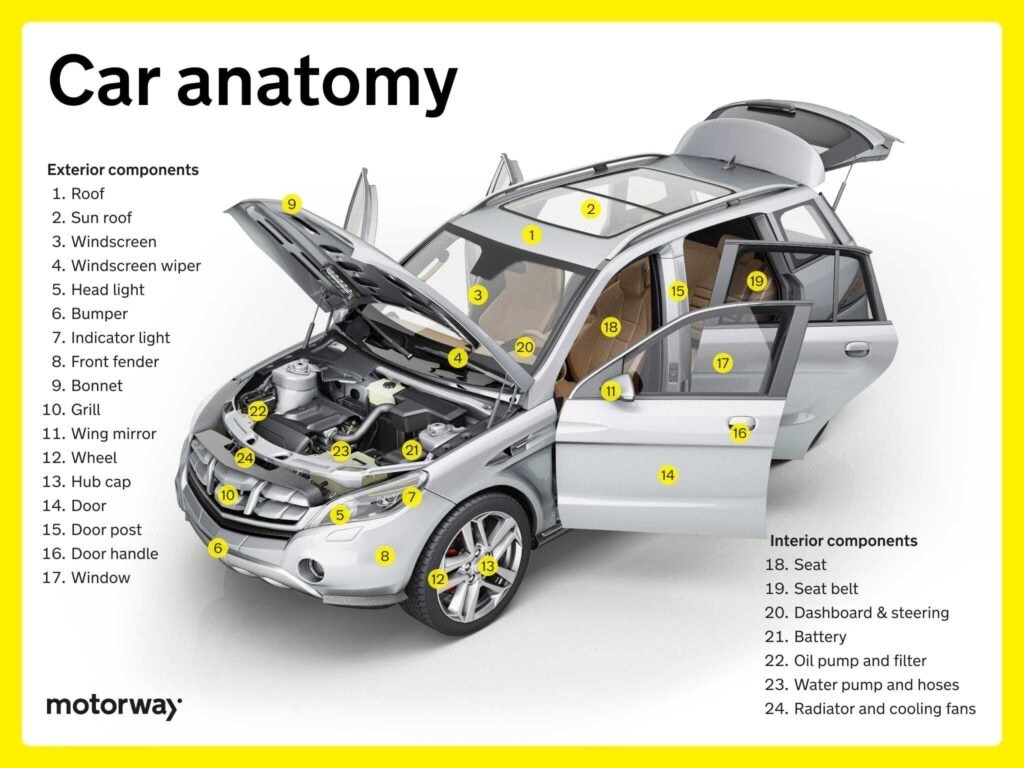
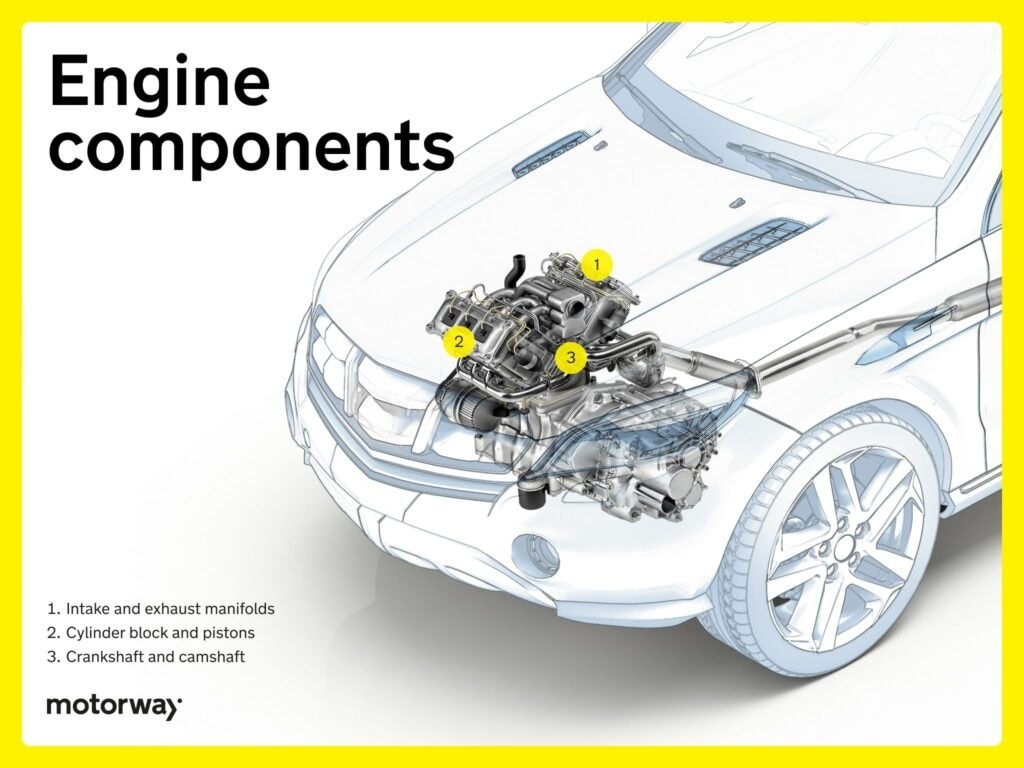
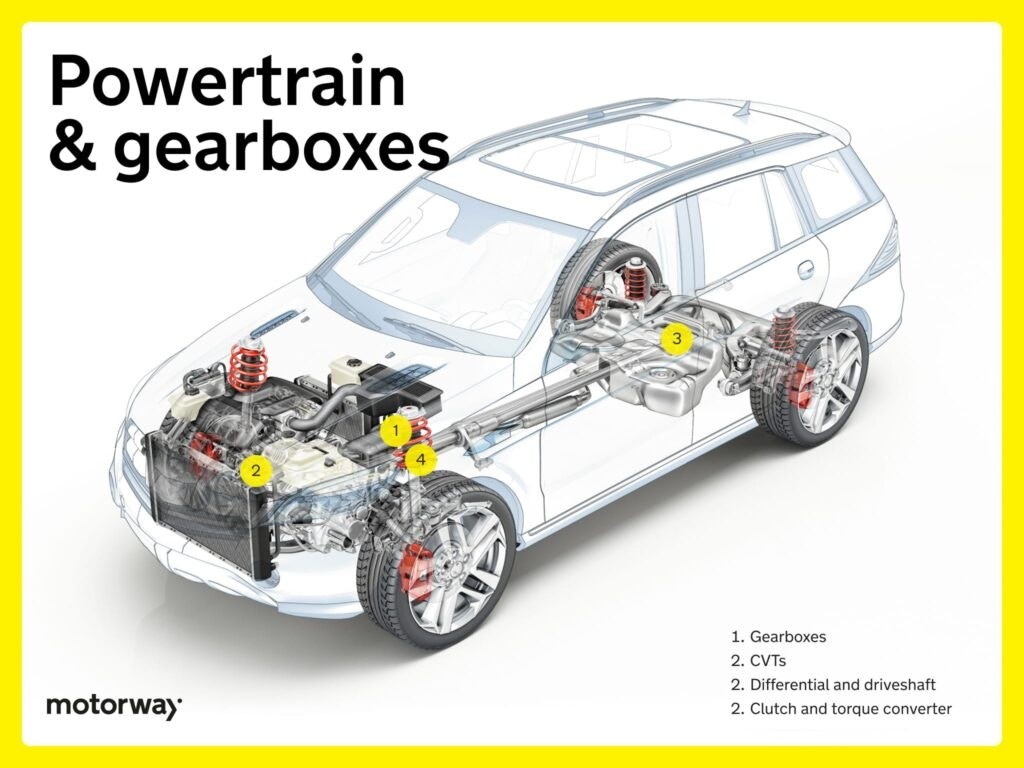
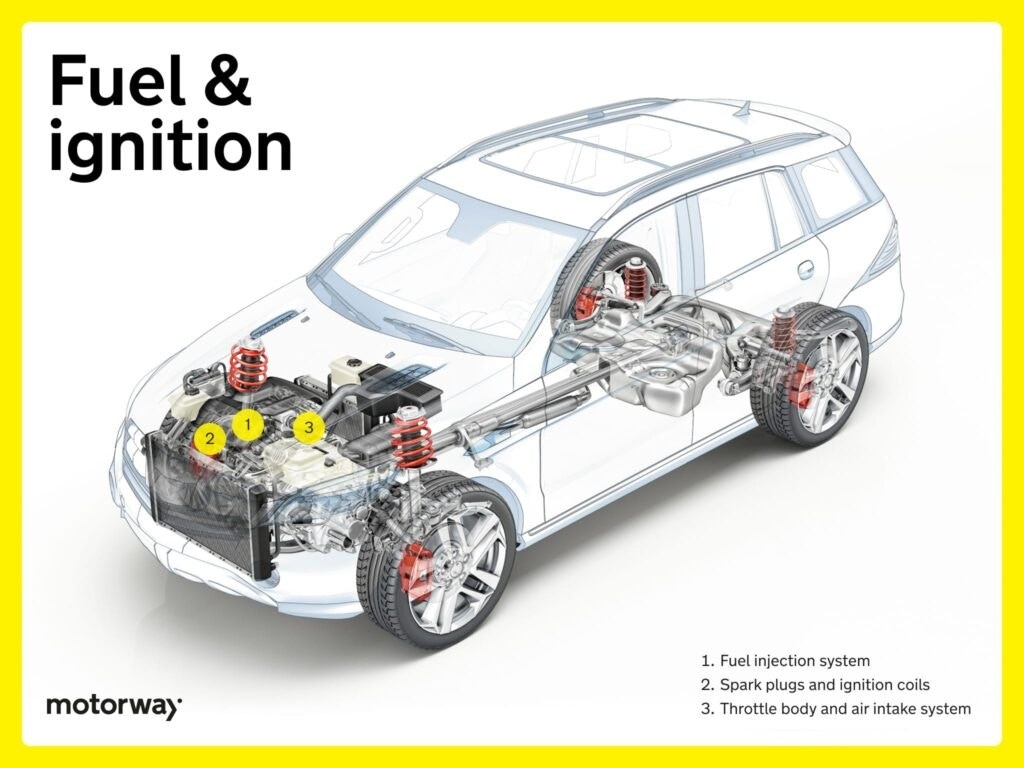
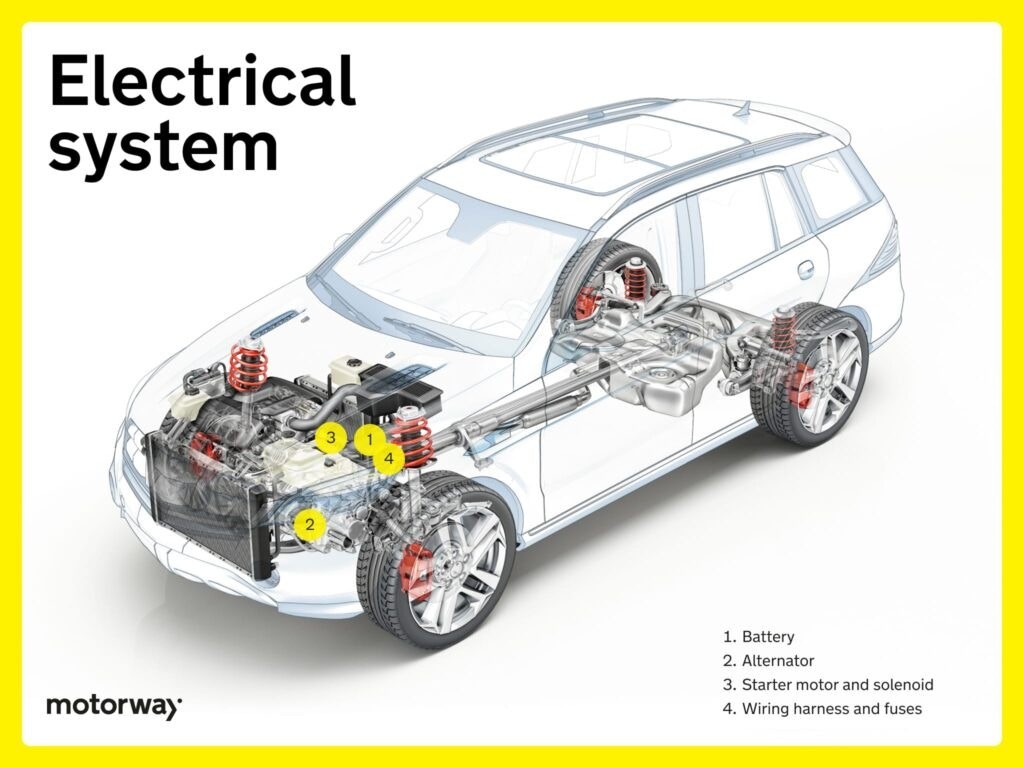
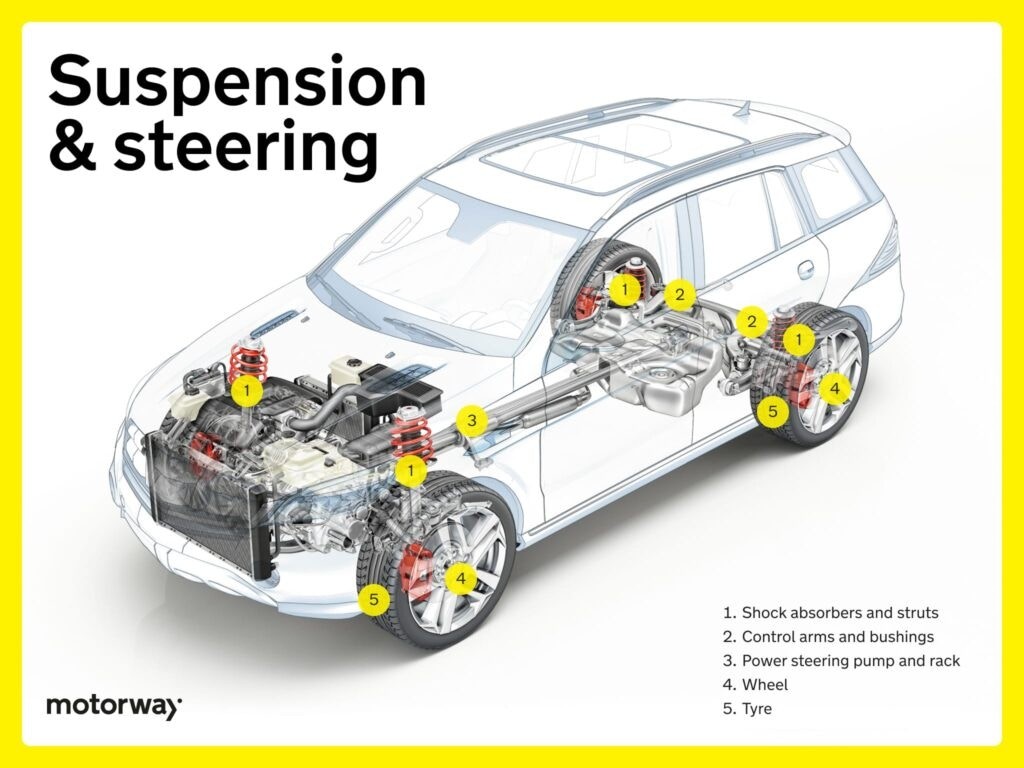
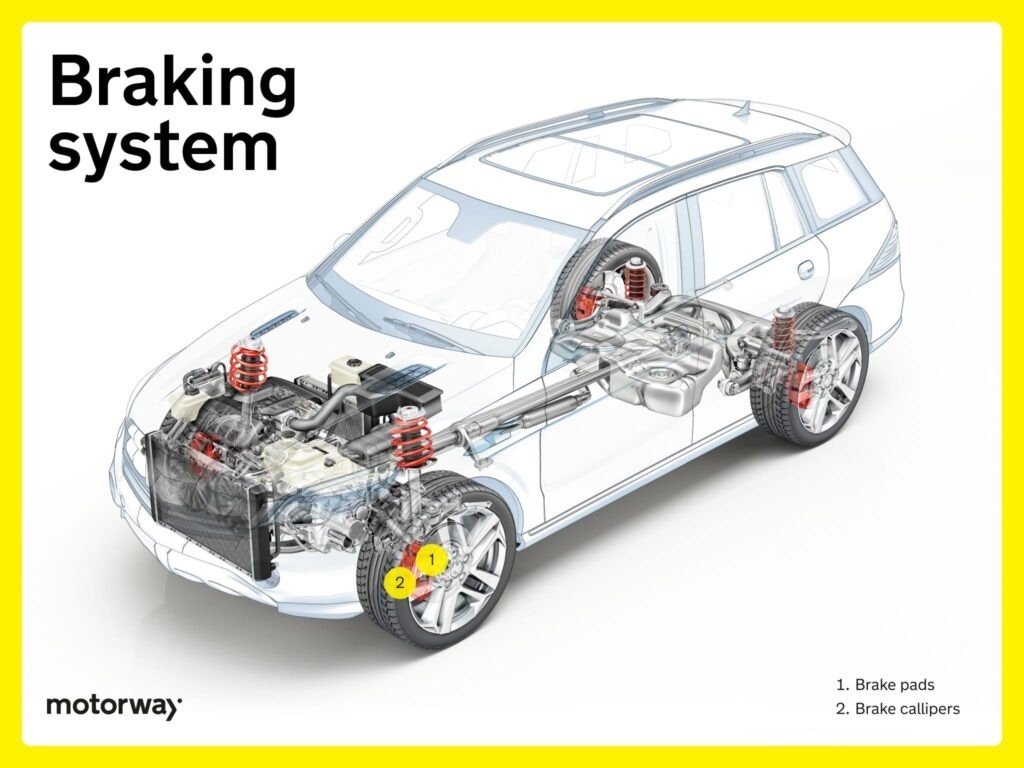
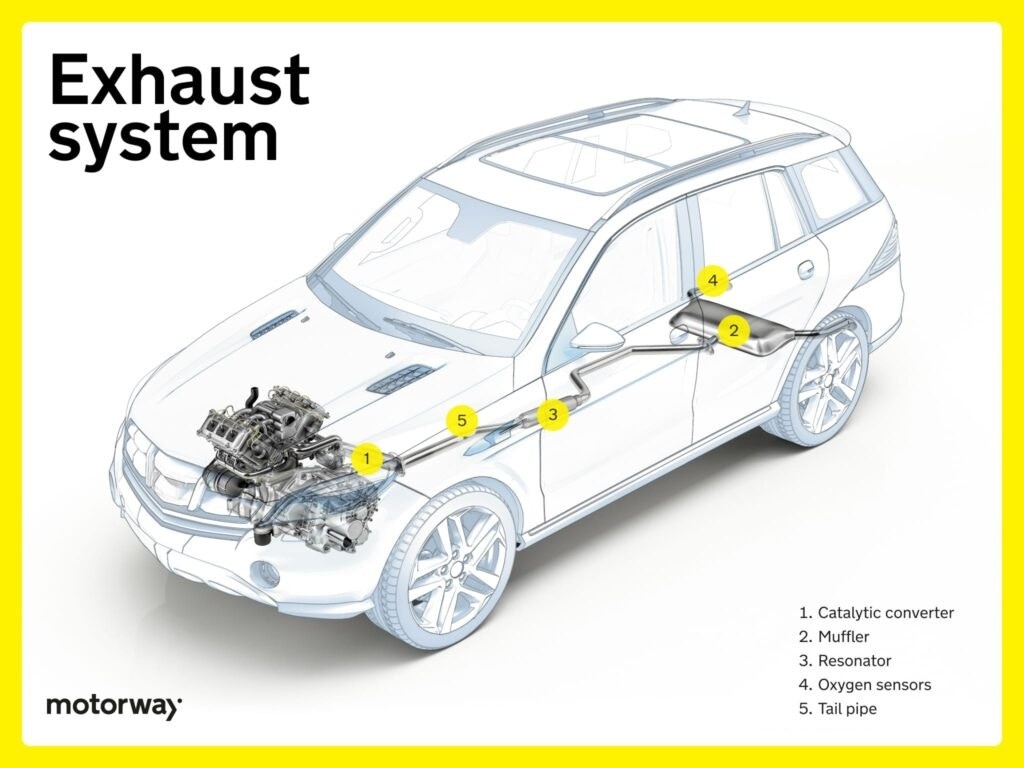
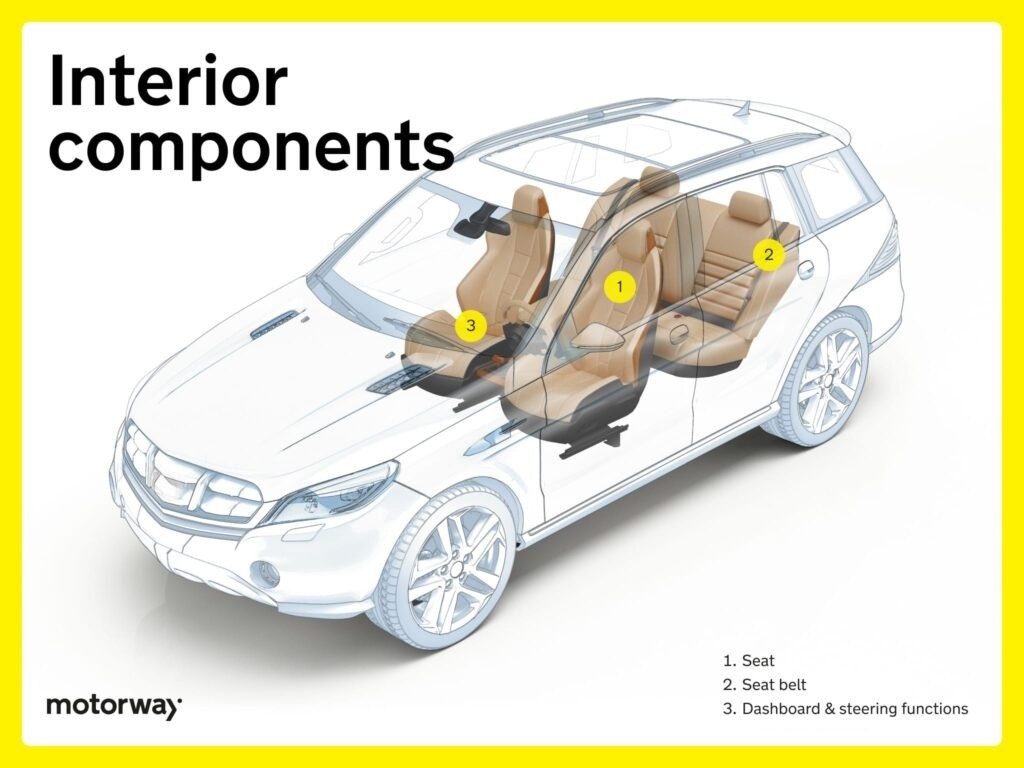
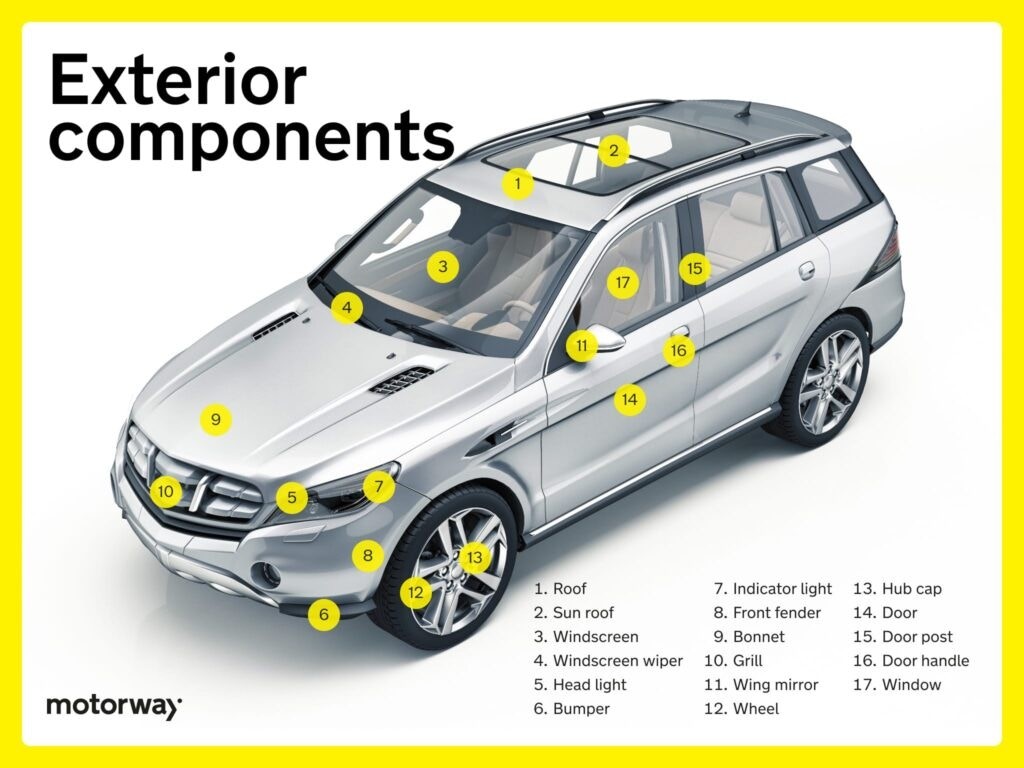
Wheel Construction Guide: Alloy vs. Steel Wheels and Construction Types
Wheel construction impacts wheel weight, strength, durability, and aesthetics. Different construction methods and materials are used to create wheels with varying characteristics.
- One-piece construction: The most common wheel construction method, where the entire wheel is cast or forged from a single piece of material, typically aluminum alloy or steel. One-piece wheels offer a good balance of strength, weight, and cost-effectiveness.
- Two-piece construction: Wheels made from two separate pieces, typically a wheel center and a rim, which are then bolted or welded together. Two-piece wheels offer greater design flexibility and customization options.
- Three-piece construction: Wheels composed of three separate pieces: a wheel center, an outer rim, and an inner rim. Three-piece wheels allow for maximum customization, including wheel width, offset, and lip depth. They are often used in aftermarket and performance applications.
- Forged construction: Forged wheels are made from a single billet of metal that is compressed under high pressure and heat. Forging creates a denser and stronger wheel compared to casting, resulting in lighter and more durable wheels. Forged wheels are often used in high-performance and racing applications where weight and strength are critical.
- Multi-piece construction: A general term referring to wheels constructed from multiple components, typically including a center section, an outer rim, and fasteners. Multi-piece wheels offer versatility in terms of design and customization.
Wheel material also affects wheel properties:
- Alloy wheels: Made from an alloy of metals, primarily aluminum or magnesium. Alloy wheels are lightweight, which improves handling, acceleration, and fuel efficiency. They also offer better heat dissipation for the brakes and enhance the vehicle’s appearance with a wider range of designs and finishes.
- Steel wheels: Constructed from steel, making them robust and durable. Steel wheels are typically heavier than alloy wheels, but they are more cost-effective and well-suited for rugged driving conditions and winter use due to their strength and resistance to corrosion.
Tyre Pressure Monitoring System (TPMS): Ensuring Proper Inflation
The Tyre Pressure Monitoring System (TPMS) is a safety feature that continuously monitors the air pressure in each tyre. TPMS sensors are located in each wheel and transmit real-time tyre pressure data to the vehicle’s computer.
If the tyre pressure in one or more tyres drops below a predefined threshold, the TPMS will trigger a warning light on the dashboard, alerting the driver to the low tyre pressure condition. Maintaining proper tyre pressure is crucial for safety, fuel efficiency, tyre lifespan, and handling. TPMS helps drivers maintain optimal tyre inflation and avoid potential tyre-related issues. TPMS systems can be direct, using pressure sensors in each wheel, or indirect, using wheel speed sensors to infer tyre pressure.
FAQs About Internal Car Parts
What parts are located underneath a car?
Beneath a car, you’ll find essential internal parts such as the engine, transmission, suspension system, exhaust system, driveshaft, differential, and fuel system components. These systems are strategically positioned under the car for protection and weight distribution, all working collaboratively to ensure the vehicle’s functionality and performance.
Approximately how many internal parts does a car contain?
The number of internal parts in a car can vary significantly depending on the model and complexity, but modern vehicles can contain over 30,000 individual parts. This vast number encompasses components across various systems, from the engine and powertrain to the electrical and interior systems, highlighting the intricate engineering involved in car design and manufacturing. Electric vehicles typically have fewer parts due to their simpler powertrain, which relies on an electric motor and battery pack instead of a complex internal combustion engine.
What are considered the most important internal parts of a vehicle?
The most important internal parts of a vehicle are those that are critical for its safe and reliable operation. These include the engine, transmission, brake system, steering system, suspension, and essential electrical components. Each of these systems plays a vital role in ensuring the vehicle’s safety, performance, and drivability. Failure of any of these critical systems can compromise vehicle safety and functionality.
Which internal car parts can be sold individually?
Various internal car parts can be sold separately in the aftermarket, depending on demand and condition. Common parts sold individually include engines, transmissions, body panels, doors, bumpers, headlights, taillights, wheels, tyres, and specific electrical components like alternators, starters, and ECUs. The market for used and aftermarket car parts provides options for repairs, replacements, and upgrades.
What are the primary reasons for car part shortages?
Shortages of car parts can arise due to various factors, often stemming from disruptions in the global supply chain. These disruptions can be caused by events like natural disasters, pandemics, geopolitical instability, and trade disputes. Increased demand for specific components, manufacturing capacity limitations, and logistical challenges can also contribute to parts shortages. The automotive industry’s complex global supply chains make it vulnerable to disruptions that can impact parts availability.
Ready to Learn More About Your Car?
Understanding the internal parts of your car is a key aspect of responsible car ownership. By familiarizing yourself with these components, you can better appreciate the complexity of your vehicle, make informed maintenance decisions, and potentially save money on repairs. Continue exploring CarparTEU.com for more in-depth guides on car ownership, maintenance, and repair to keep your vehicle running smoothly for years to come.